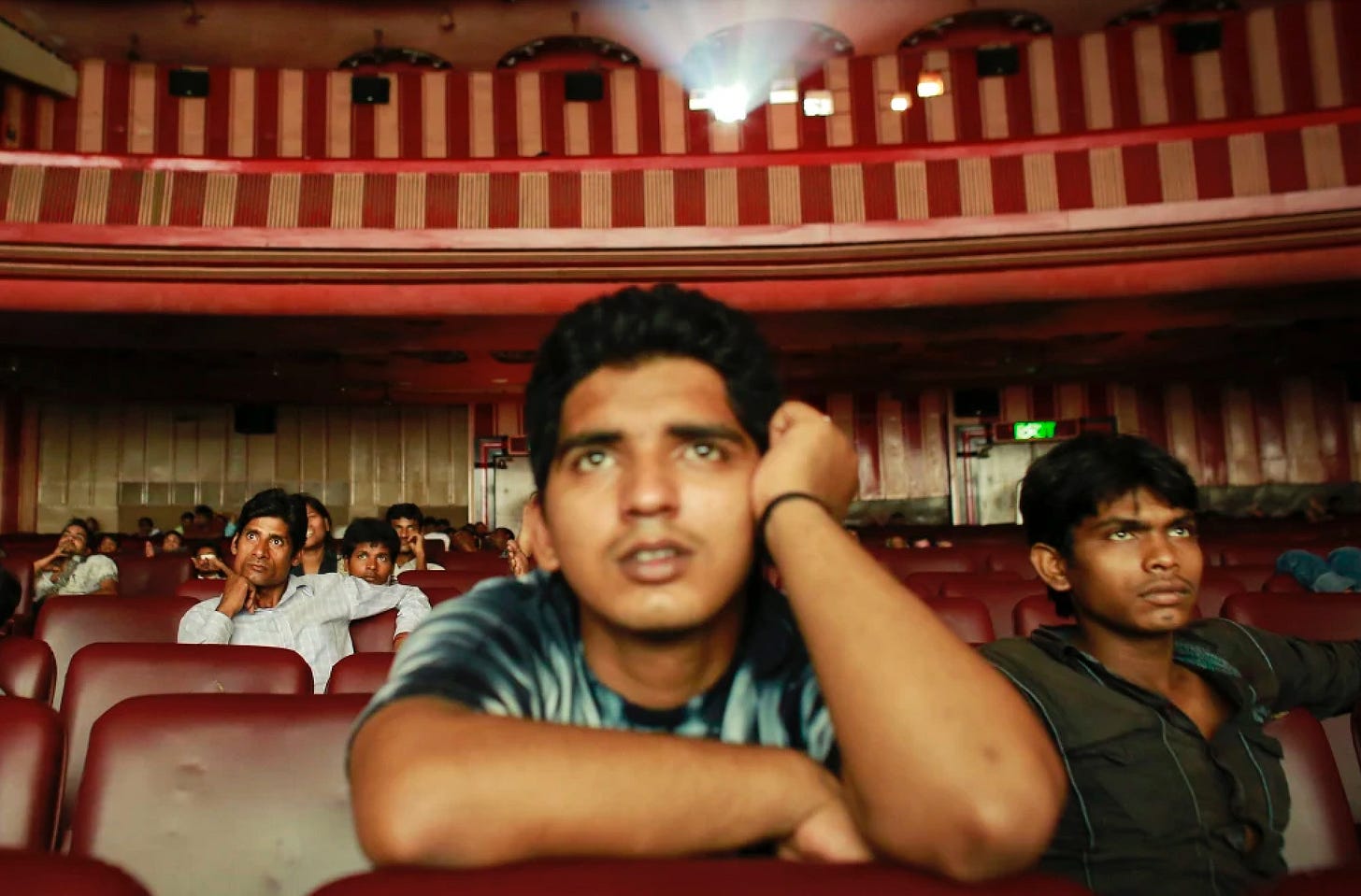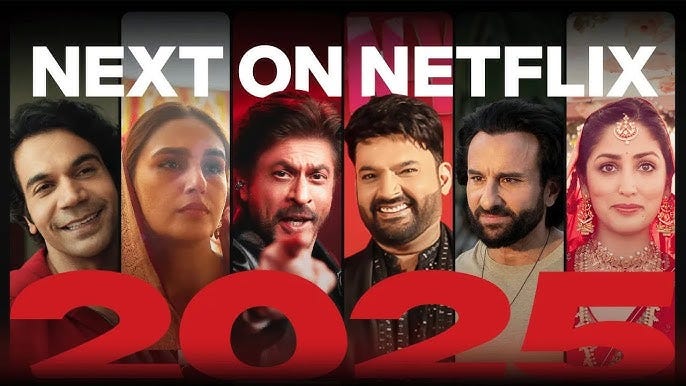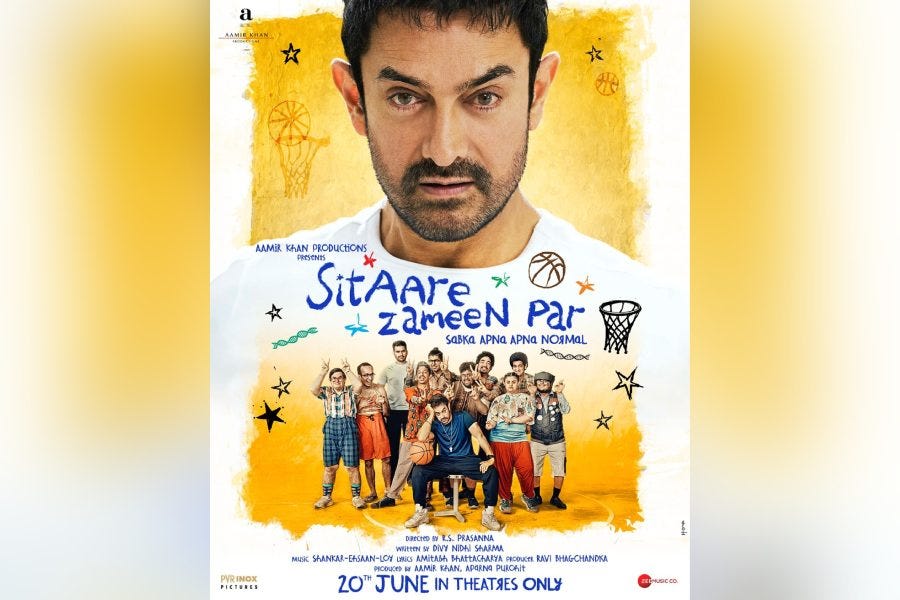Aamir Khan Slams the Brakes on Fast-Track Streaming
Evaluating the Indian Theatrical-to-OTT "Window" War
Hey Streamers 👋,
A warm welcome to the 90th edition of the “Streaming in India” newsletter, your weekly news digest about streaming players, OTT trends, and analyses. If you are not already a subscriber, please sign up and join thousands of others who receive it directly in their inbox every Wednesday.
Agenda
The Shrinking Theatrical-to-OTT Window War in Bollywood
The Theatrical Window is Shrinking
Why Are Windows Getting Shorter?
Aamir Khan’s OTT Rebellion and D2C Experiment
Final Thoughts
And….Action!
The Shrinking Theatrical-to-OTT Window War in Bollywood
The gap between a film’s theatrical release and its debut on streaming (OTT) platforms has become a hot-button issue in the Indian film industry.
In recent years, this theatrical-to-OTT window has drastically shrunk – from several months to just a few weeks in many cases. This trend is sparking debate among producers, cinemas, and streaming services over its impact on box-office revenues and movie-going habits.
A high-profile example is superstar Aamir Khan’s bold stance: he turned down a hefty OTT deal (reportedly around ₹150 crore) for his upcoming film Sitaare Zameen Par, insisting it will not hit any streaming service in the usual 8-week post-release period.
Instead, Khan is advocating a much longer gap of about six months before the film goes online. His move has reignited the discussion on whether quick OTT releases are cannibalizing theatrical earnings or simply adapting to changing viewer preferences.
The Theatrical Window is Shrinking
Not long ago, Indian films typically took months to reach any “home viewing” format. Before the OTT era, a movie might run in theaters for 10-12 weeks or more, then become available on DVD/TV much later.
However, with the rise of digital platforms, release windows have collapsed. Industry data shows that between 2015 and 2019, average theatrical windows fell by over 80% in both Hollywood and Bollywood. In India’s case, an informal 8-week (~56 days) exclusivity in cinemas used to be the norm for Hindi films (Bollywood) until the pandemic. Today, that standard has eroded: many films premiere on OTT barely 4 weeks after theatrical release.
2022-23: Theatrical business resumed post COVID, and Bollywood producers initially agreed to restore an 8-week window from August 2022. But in practice, flexibility crept in. Under-performing movies often dropped to OTT early (sometimes after 4 weeks) to maximize reach and revenue. Meanwhile, South Indian industries (Tamil, Telugu, etc.) largely stuck to a 4-week window, which had long been customary there. Major Hindi multiplex chains like PVR/Inox even refused to screen some South films that insisted on 4-week OTT releases, underscoring the tug-of-war between regions.
2024-2025: A “one size fits all” window no longer exists. Studios and streamers often use performance-based windows. For example, a recent Telugu film deal specifies an 8-week OTT release if the movie does well in theaters, but a 4-week release if it underperforms. In other words, a blockbuster will be kept longer exclusively in cinemas, while a flop is sent online sooner. Producers are clearly keen to hedge bets in an uncertain box-office climate.
Why Are Windows Getting Shorter?
Several factors drive the shrinking theatrical window:
OTT Revenue and Audience Demand: Streaming platforms offer lucrative deals to film producers, especially for quick post-theatrical releases. With audiences now accustomed to on-demand content, there’s high demand to watch new films at home as soon as possible. OTT services have deep pockets and in recent years didn’t hesitate to pay extra to reduce the gap from 8 weeks to 4 weeks for popular titles. For producers, a faster OTT release can mean securing a big payday upfront, reducing their risk if theatrical earnings disappoint.
Pandemic Habits: COVID-19 lockdowns trained viewers to wait for digital premieres. Even after cinemas reopened, many moviegoers – especially in urban areas – became less inclined to rush to theatres, assuming films would land on Netflix/Amazon within a month or two. This “wait-for-streaming” mentality put pressure on producers to shorten the gap and capitalize on post-release buzz before it fades.
Box-Office Unpredictability: The fate of movies at the box office is more unpredictable than ever. If a film’s theatrical run tapers off quickly (say, after 2-3 weeks), holding it back from OTT might only diminish its overall revenue potential. Flexible scheduling is therefore on the rise. Studios now often pre-negotiate conditional OTT clauses: for instance, “if the movie drops below X collections by week 3, allow OTT by week 4; if it’s still strong, hold until week 8.” This dynamic strategy ensures that if a film flops, it can start streaming in a month or less to capture whatever audience interest remains. Recent examples include Tamil star vehicles that skipped North Indian theaters entirely to enable early streaming, versus others that delayed streaming because they found a theatrical audience against the odds.
Producer Calculations: Smaller and mid-budget films, in particular, benefit from shorter windows. These films often struggle to survive beyond the first couple of weeks in theaters (due to limited marketing or being overshadowed by bigger releases). For them, an early OTT debut can stop the bleeding financially. Indian producers say that they’d rather not wait 2 extra months for a theatrical trickle when a streaming launch could yield instant cash and a wider viewership.
This was evident during a recent legal tussle: producer Dinesh Vijan planned to send the rom-com Bhool Chuk Maaf straight to OTT, skipping cinemas, until multiplex chain PVR sued. The eventual court-brokered compromise had the film release theatrically and hit Amazon Prime Video just 2 weeks later, far shorter than the usual window. The case shocked theater owners but underscored producers’ willingness to fight for OTT flexibility.
OTT Platforms’ Strategy: From the streamer’s perspective, paying for exclusive rights loses value if they must wait too long. Platforms thrive on fresh content to retain subscribers. They prefer not to delay a big movie’s online premiere for 2+ months after purchase. In fact, streaming services often map out content calendars in advance; an unpredictable holdback complicates their scheduling.
Thus, they too have pushed for a predictable (and shorter) window. Many Hindi film contracts now simply target a 6-8 week OTT launch by default, and in the South, industry bodies have officially adopted a 4-week norm for streaming after theatrical. Multiplexes in South India have little leverage to oppose this because single-screen theaters and local audiences dominate those markets.
Aamir Khan’s OTT Rebellion and D2C Experiment
Aamir Khan, often dubbed “Mr. Perfectionist” of Bollywood, has added a new chapter to this saga by openly challenging the prevailing release model. His upcoming film Sitaare Zameen Par (spiritual sequel to the acclaimed Taare Zameen Par) is set for a theatrical release on June 20, 2025. What’s making waves is that Aamir has refused all OTT streaming offers for the film’s post-theatrical rights.
This is almost unheard of for a modern big-budget film. According to industry insiders, he walked away from an initial offer of around ₹150 crore from a streaming giant (with potential to negotiate even higher). For context, ₹150 crore is a massive sum that could underwrite a large portion of the film’s budget. Rejecting it signals Aamir’s conviction that immediate monetary gains should be sacrificed for what he calls the “long-term benefit of the industry”.
Aamir Khan’s stance is that he wants at least a six-month gap between the theatrical release and any OTT availability. In his own words, “You need that much time to separate the theatrical audience from the home viewers” [brandequity.economictimes.indiatimes.com].
He believes a film needs the breathing room to build word-of-mouth over weeks and that many people only decide to watch after hearing good feedback, which can take several weeks. But if those people know the movie will pop up on their streaming service in, say, 4-8 weeks, they might never bother to make the effort to go out to a theater.
By enforcing a six-month wait, Khan argues, by the time the film hits OTT, it will no longer be “stealing” any audience from cinemas – anyone who had real interest would have found a way to see it on the big screen in that half-year period. “If you have not watched it in six months, there is very little chance of you watching it in theatres at all,” he says, so only then, after six months, it can safely be made available for home viewing.
This decision wasn’t easy even for Aamir – he has acknowledged that in the short term, “we might lose big money” by not selling Sitaare Zameen Par to a platform immediately. In fact, members of his own production team and family strongly advised against it, given the financial risk. Yet, Khan is adamant that the shorter theatrical windows are a “trap” that could destroy the industry’s future.
He has effectively thrown down a gauntlet, betting that if his model succeeds, others might follow suit in reclaiming a longer exclusive window. And if it doesn’t, as he candidly put it, “we all have to go back to the drawing board.”
However, Aamir is not merely delaying the OTT release; he’s reimagining the post-theatrical route entirely. Reports indicate that Sitaare Zameen Par will not go to any subscription OTT platform at all (at least not in the first 6 months). Instead, Aamir plans to make it available as a pay-per-view (PPV) offering on YouTube roughly two months after its cinema release [hindustantimes.com].
In other words, after the initial theatrical run, viewers who missed it in theaters can rent/buy the film online (likely via YouTube Movies) by late August, but it won’t be part of a flat-rate catalogue on Netflix, Prime Video, etc. This approach is essentially a form of direct-to-consumer (D2C) streaming, cutting out the middleman of a large OTT subscription service.
Aamir’s logic here is strategic: a transactional VOD model maintains some of the “event” nature of the film. If you really want to watch it at home, you’ll have to pay specifically for that film (just like buying a ticket, albeit cheaper). This, he hopes, preserves a sense of urgency and value around the movie, unlike the “free on OTT with subscription” scenario which, in his view, “discourages viewers from watching movies on the big screen” in the first place. A source close to him explained that for non-spectacle films especially, viewers have gotten used to skipping the theater if they know it’ll be on a streaming platform they already subscribe to.
But a pay-per-view release “creates a cinema-like urgency”, because the viewer must make a conscious purchase to see the film [hindustantimes.com]. It’s not as ideal as them buying a theater ticket, but it’s psychologically different from it dropping as part of an unlimited buffet of content. It also potentially gives producers more control and revenue share per view, rather than selling all rights in one go.
Final Thoughts
The tussle over theatrical vs. OTT release windows in India is a microcosm of the film industry’s larger challenge: adapting to changing consumer habits without abandoning what makes the cinematic experience special. On one side of this “window war,” we have the forces of technology and economics pulling towards shorter windows – audiences wanting instant access and studios chasing quick returns. On the other side, there’s a push to safeguard the traditional exhibition sector – giving movies longer exclusivity to cultivate a theater-going culture and maximize box-office potential. The middle ground has been shifting over the past few years, and it continues to evolve through negotiations, court cases, and bold experiments like Aamir Khan’s.
Bollywood is at a crossroads similar to where Hollywood was a couple of years ago: finding that sweet spot where theaters and streamers co-exist profitably. The outcome is likely to be a hybrid model – neither the old six-month waits of DVD days nor a complete free-for-all where films drop online immediately. As of 2025, a de facto 4–8 week window is common in India, but this could lengthen a bit if more stakeholders band together as they attempted in 2022. The experience of other markets suggests that a roughly 6-8 week window may become the accepted compromise for most films, with premium exceptions (big hits holding longer) and flops making quick exits.
The one-size-fits-all window approach is likely gone for good. Instead, agility and case-by-case strategy will rule. For audiences, this means some movies you’ll see on Netflix barely a month after release, while others you might not find online for half a year. For the industry, it means constantly balancing between the allure of OTT money and the long-term goal of sustaining theaters.
The stakes are high: India has one of the lowest per-capita theater attendance rates in the world (only ~8.6% of Indians went to a cinema at least once in 2022) [ormaxmedia.com]. Losing more of that audience to living rooms could diminish the cultural impact and revenue of theatrical films.
Aamir Khan’s crusade to expand the window is, at its heart, an attempt to “rewire” the audience mindset – to make going to the movies the primary way to experience new films, with streaming as a later convenience, not a near-immediate substitute. Whether he succeeds or not, the conversation he ignited is a valuable one. It challenges filmmakers to think about the value proposition of a theatrical release in an era of abundant digital content. It also challenges OTT platforms to perhaps reconsider if rushing every film to streaming is truly a win-win, or if a healthier gap could benefit the overall film ecosystem (and eventually even their own libraries with films that have proven theatrical credibility).
In the coming months, watch for how other Bollywood A-listers react. If Sitaare Zameen Par sets a trend, we may see a mini-revival of longer windows – even if not six months, maybe 10-12 weeks for select films – and novel release patterns like premium rentals.
If not, the drift toward shorter windows will likely continue, and theaters will have to find other innovations to draw crowds (better infrastructure, pricing, immersive technology, etc.). As things stand, the theatrical-to-OTT window war in India is far from over, and its resolution will shape the future of movie consumption in one of the world’s largest film markets.
New Test Captain and a new look India team take on England in their back yard starting June 20th! Looking forward to a spirited performance by the touring side and a fantastic English summer.
Streaming in India is a weekly newsletter exploring the trends that matter to streaming professionals in India. If you are not already a subscriber, sign up and join several others who receive it directly in their inbox every Wednesday.
I am launching the region’s first fund called Pressplay Capital focused on the attention economy - LPs and Startups, please do get in touch here.
Please sign up for my other newsletter focused on “eyeball economy” focused startups (Media, Entertainment, Gaming, Ad Tech & Sports), the Indian / Middle East startup and venture capital ecosystem; in your inbox every Monday: Mehtta Ventures Dubai.
I represent the Adsolut Media business in the Middle East and am a “board observer” for their growth. We have amongst the largest supply of Connected Television premium inventory in the Middle East - Sub-continental corridor along with one of the largest mobile / web inventories as well. Please get in touch for your advertising requirements.







